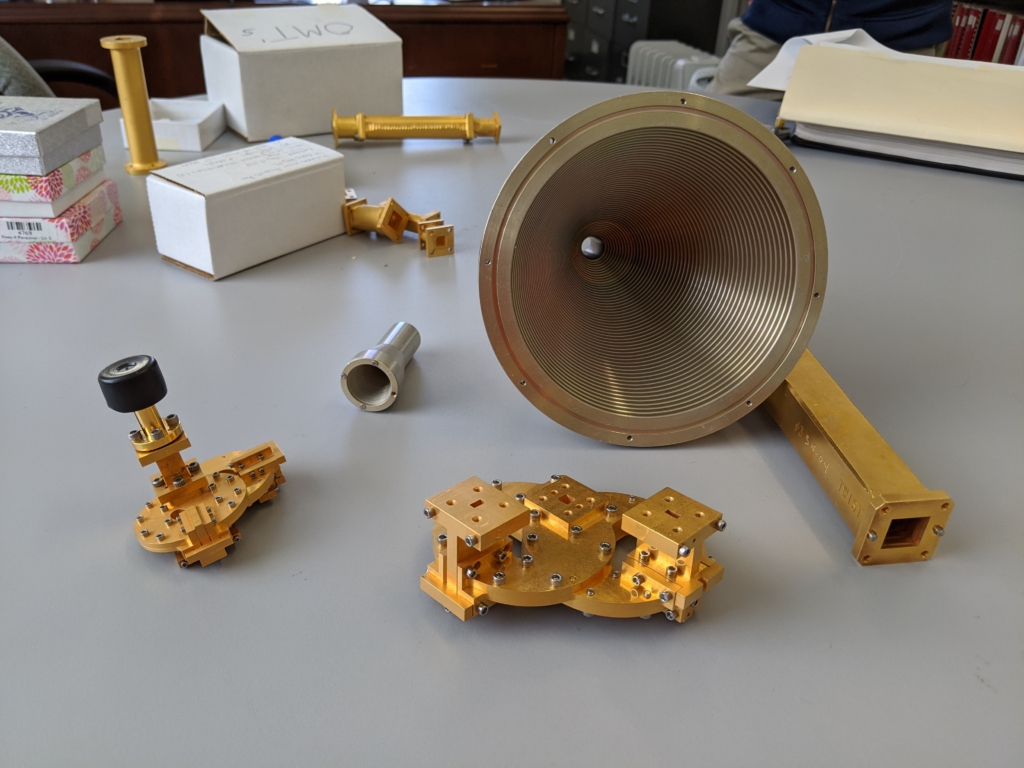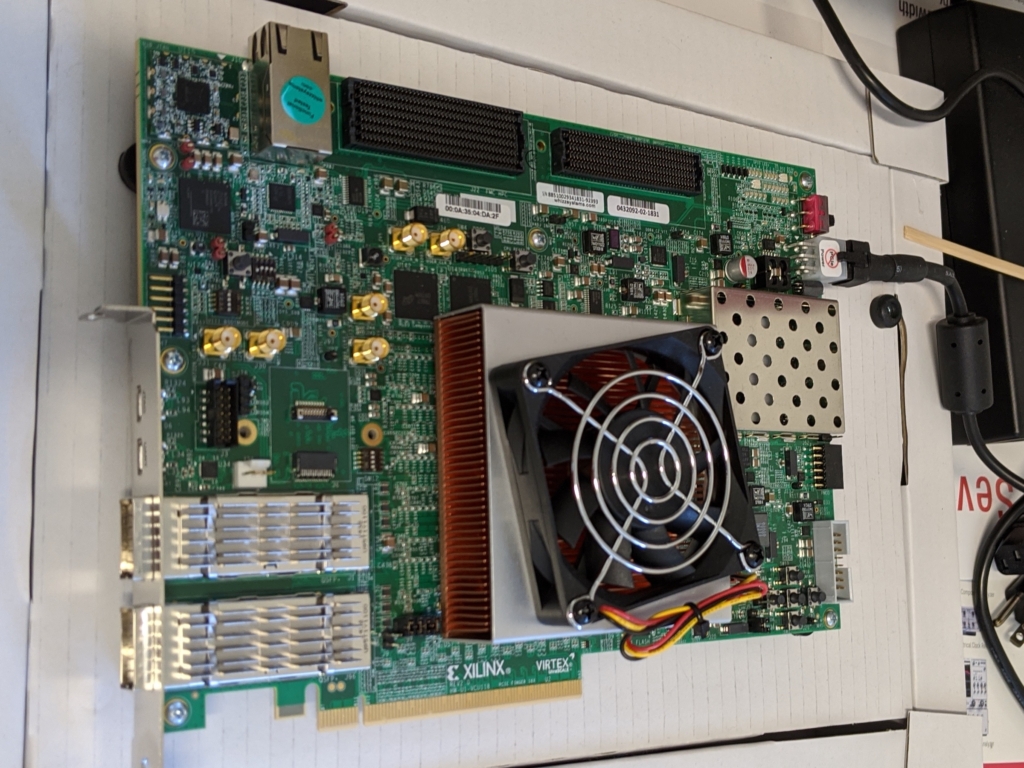A team of astronomers has made a surprising discovery using the U.S. National Science Foundation Green Bank Telescope (NSF GBT): eleven fast-moving clouds of cold, neutral hydrogen gas—akin to “ice cubes”—surviving deep inside the Fermi Bubbles.
Recent News
ALMA Reveals Stunning Details of Infant Galaxies in the Early Universe
The [CII] Resolved ISM in STar-forming galaxies with ALMA (CRISTAL survey) peered back to when the Universe was only about one billion years old – a mere toddler in cosmic terms. These observations are helping scientists understand how galaxies formed and evolved from primordial gas clouds into the organized structures we see today.
NSF NRAO Leads Critical Spectrum Studies to Safeguard Radio Astronomy
The U.S. National Science Foundation National Radio Astronomy Observatory (NSF NRAO) has received funding to expand its study of an invisible—and crucial—scientific and technological resource: the radio spectrum.
NRAO’s Central Development Laboratory: Making the Invisible Visible
Nestled among the hills of the University of Virginia campus are a couple of nondescript buildings. They are home to NRAO’s Central Development Laboratory (CDL). The buildings are easy to overlook, just as it is easy to overlook the work done by CDL. We see photographs of the radio dishes at Atacama Large Millimeter/submillimeter Array (ALMA) and the Very Large Array (VLA) under a starry sky, and the beautifully rendered scientific images they produce. But between these two extremes is a complex set of processes that transform the faint radio signals of distant space into usable scientific data. Achieving that transformation effectively is one of CDLs most important jobs.
Radio is light, similar to the visible light we see all around us, but with much longer wavelengths. The wavelength of visible light is similar to the size of microscopic bacteria, while radio light has wavelengths ranging from millimeters to meters. Radio images can’t be captured on photographic film, or converted to an image by a simple digital camera. Instead, the signal must be amplified, filtered, and processed in multiple stages before its information can be stored on a digital chip.

Sri Srikanth works on one of the first stages: capturing and focusing radio signals so that they are strong and clear. This is done with feed horns and polarizers. The feed horn is like a funnel that maximizes the radio signal. To be effective, a feed horn must be scaled relative to the wavelength. The shorter the wavelength, the smaller the feed horn must be. Ridges inside the feed horn helps prepare the signal for the polarizer, which splits the signal into perpendicular parts. These components are designed to carry the signal through to the next stage with very little loss.
Before the signal can be converted from analog radio to digital, it must be pre-processed. A large part of this stage involves amplification and downconversion. This is where Matt Morgan comes in. He designs the systems that make the signal usable by computer processors. Computer chips operate at frequencies up to the GHz range, but the radio frequencies captured by telescopes can be as much as a thousand times higher. Downconversion involves combining the radio signal with another signal of a similar frequency. These two signals interfere to create a signal of much lower frequency. When done correctly, this creates a GHz frequency radio signal that contains all the information of the original. Once this is done it can be converted to a digital signal.

Analog to digital conversion is common in our modern world. We use it all the time to watch digital television or browse cat pictures on the Internet. Radio astronomy signals are converted in a similar way, but they carry so much information that you need a specially designed computer chip to keep up with the bandwidth. Omar Ojeda creates these chips by first building prototypes using off-the-shelf parts. His prototypes are about the size of a laptop. Once the design is optimized and tested it is built into chips that would easily fit on the tip of your finger. With these custom designs radio telescopes can capture more radio data at lower costs.
Much of this needs to be done at extremely low temperatures. Radio light is often produced by cold gas and dust in deep space. To see these signals your detectors need to be even colder. This is a particular challenge because computer processors and power systems generate heat as they operate. Joey Lambert is a low-temperature physicist who works on signal mixers. These are made of superconducting materials and require low temperatures to operate.
All of these stages need to work together smoothly, so CDL coordinates with astronomers and engineers to address needs as they arise. Observatories such as ALMA and the VLA are at the cutting edge of radio astronomy. They not only give us amazing radio images, they also teach us how to observe the radio sky more effectively and in more detail. The Central Development Laboratory works to ensure that NRAO observatories will always be improving.
Recent News
Galactic Mystery: How “Ice Cubes” Survive in the Milky Way’s Blazing Bubbles
A team of astronomers has made a surprising discovery using the U.S. National Science Foundation Green Bank Telescope (NSF GBT): eleven fast-moving clouds of cold, neutral hydrogen gas—akin to “ice cubes”—surviving deep inside the Fermi Bubbles.
ALMA Reveals Stunning Details of Infant Galaxies in the Early Universe
The [CII] Resolved ISM in STar-forming galaxies with ALMA (CRISTAL survey) peered back to when the Universe was only about one billion years old – a mere toddler in cosmic terms. These observations are helping scientists understand how galaxies formed and evolved from primordial gas clouds into the organized structures we see today.
NSF NRAO Leads Critical Spectrum Studies to Safeguard Radio Astronomy
The U.S. National Science Foundation National Radio Astronomy Observatory (NSF NRAO) has received funding to expand its study of an invisible—and crucial—scientific and technological resource: the radio spectrum.
